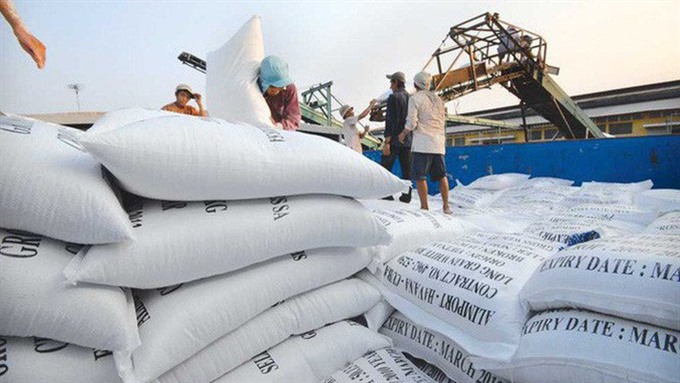 Economy
Economy

Việt Nam should build product chains to help increase goods’ value and cut out middle men to improve competitiveness.
 |
| Local firms have not paid attention to build their own brandnames to increase added value. — Photo vneconomy.vn |
HÀ NỘI — Việt Nam should build product chains to help increase goods’ value and cut out middle men to improve competitiveness.
Speaking at a conference on exports held in Hà Nội on Wednesday, Trần Thanh Hải, deputy director of Import-Export Department under the Ministry of Industry and Trade, said this had been an important solution for sustainable export growth.
Việt Nam’s exports have seen strong growth in terms of scale and production ability. Total export turnover reached US$214 billion in 2017, a 21.2 per cent year-on-year increase.
Notably, the export situation this year was expected to have opportunities for higher growth as commitments for international integration have been implemented, helping reduce import-export taxes.
Hải said that the efforts of the Government and ministries in administrative reform to provide a favourable business environment had aided export activities.
Total import-export turnover in the first seven months of this year rose by 12.7 per cent from the same period last year to reach $264.3 billion. Of which, export turnover was $133.6 billion.
Exports continued to maintain high growth of 15.3 per cent in the period, meeting 56.5 per cent of the year’s targets.
“This has been a bright point in the economy with high export turnover. However, there were shortcomings that pose challenges the country’s exports,” he added.
He said that protectionism became more common in the first months of the year.
In addition, the country’s exports have depended on foreign directed investment (FDI) enterprises, which accounted for 70 per cent of total turnover. This was because Việt Nam has not had a export value chain, he said.
As an example, a representative from the Việt Nam Textile and Apparel Association said the country’s garment export turnover rose from $15.8 billion in 2011 to $31 billion in 2017, accounting for 4 per cent of the world’s total turnover.
However, the sector has mainly performed cutting and sewing in the global garment and textile supply chain. Vietnamese garment and textile firms have participated in simple outsourcing and lack the ability to provide packaging, resulting in low added value.
The garment and textile industry has also relied on imported materials.
The local companies had to import up to 86 per cent of cloth for production and exports.
A similar situation has been seen in the agricultural sector.
Việt Nam has high agricultural output. However, most of its products have not been exported widely due to limited processing capacity. Agricultural and seafood products have been mainly exported as raw materials.
Statistics from the Ministry of Agriculture and Rural Development showed that the country has 700 agricultural chains certified as safe chains. However, only half of the total operate effectively.
Đoàn Anh Tuấn, chairman of Thế Hệ Mới Tea Company Ltd, said most Vietnamese firms were small-scale and could not affort to invest in material areas and modern processing and packaging equipment.
"Moreover, local firms have not built their own brand names. The Government should have programmes to invest into technologies to create competitive products and take a firm foothold in the international market," said Tuân.
Participants proposed the country build agricultural chains through consumption contracts between farmers, co-operatives and businesses to have stable material areas. In addition, it should develop breeds with high output and use science and technologies in farming, harvesting, preserving, processing and consumption.
Experts said the support industry could be the foundation for sustainable exports, so the Government should prioritise support industry development for sectors of mechanics, spare pare production, garment and textile and leather shoes.
The solutions could be effective if the business community participated, they said.
Previously, Prime Minister Nguyễn Xuân Phúc approved a plan to improve the competitiveness of exported products in Việt Nam to create a legal framework for sustainable exports.
The plan aims to increase value of key export staples by 20 per cent by 2020.
It hopes to gradually increase exports of agricultural and seafood products to the EU, Japan and South Korea markets in 2016-20 with average growth rate of 8 per cent a year. — VNS




